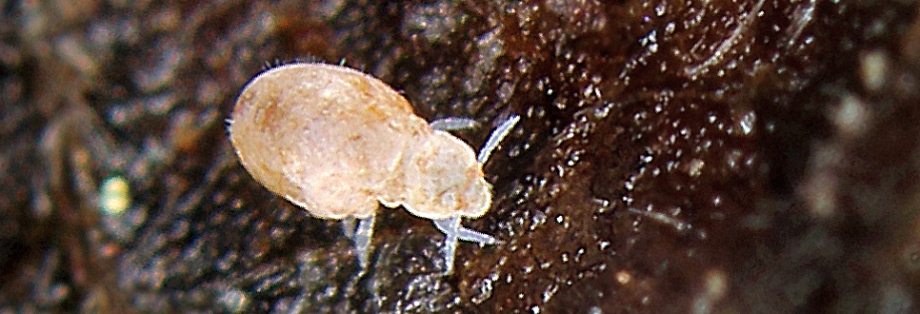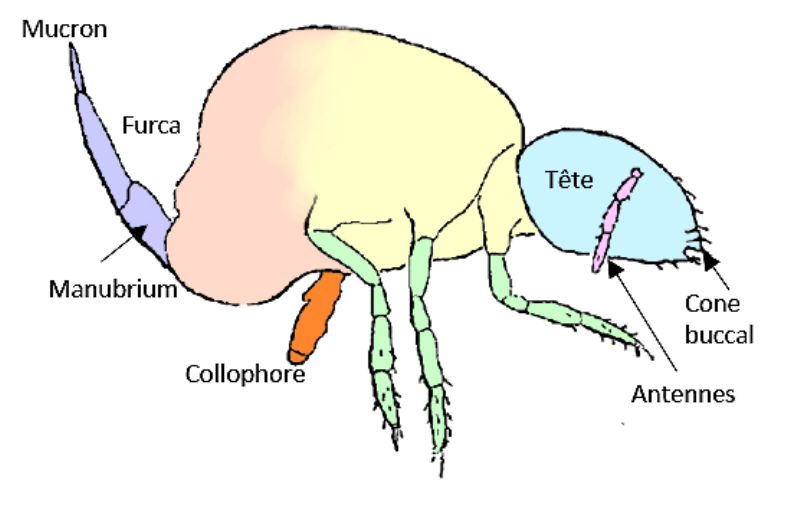Morphology:
Four distinct morphological types are observed in springtails:
- Poduromorphs and Entomobryomorphs which are grouped in the suborder Arthropleones.
- Symphypleones and Neelipleones which are grouped in the suborder Symphypleones
Arthropléones :
The head of the Arthroplean springtails is distinct from the thorax and surmounted by a pair of antennas possessing several articles. In addition to the mouthparts and antennas, the latter has three types of external sensory receptors integrated into the epidermis that are classified according to the nature of the stimuli they can receive. We find, photoreceptors, mechanoreceptors and chemoreceptors, respectively materialized by the ocular plates, the sensilla and the post-antennal organ.
The rest of the springtails body has nine post-cephalic segments, of which the first three segments form the thorax to which are attached three pairs of legs whose ends are provided with claws with single or double terminations. The following six segments form the abdomen** which carries several organs that would be vestiges of old legs that have evolved over the ages to give the furca, the collophore and the retinacula. The sixth segment that carries the anal and genital orifices is usually not visible dorsally. It will be noted that the evoked segments are practically not visible on springtails of the Symphypleones type where they are fused together, only the head still appears distinct.
Poduromorphs :
Poduromorphs are small, their three thoracic segments are clearly visible. They do not jump, their furca is atrophied or absent. They may have no eyes or simply ocelles implanted without an eye plate. their bodies are puddled and their integuments are soft. They are often found between wet leaves in the forest litter but also in the interstices below the bark of the trees.
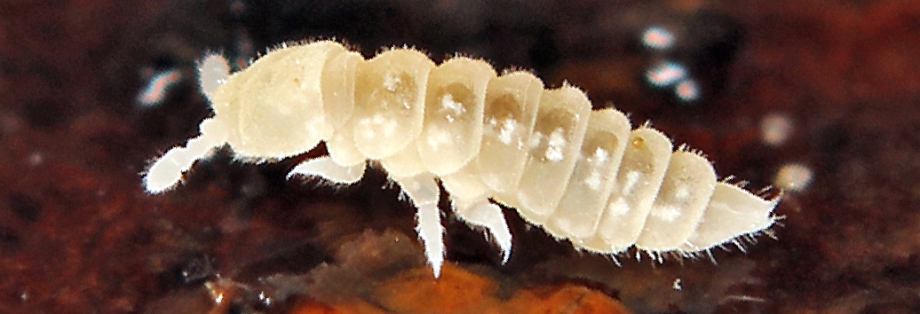
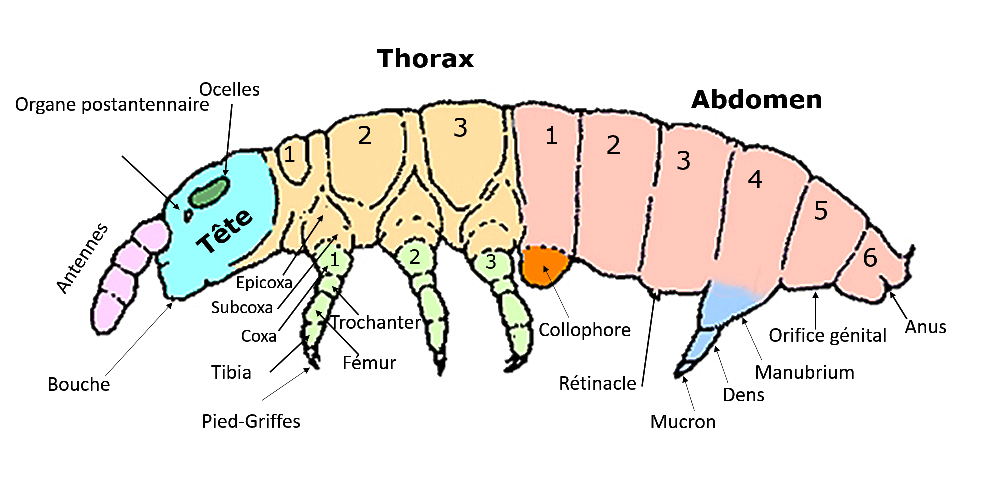
Entomobryomorphs :
The body of Entomobryomorphs is rather dark and colorful, usually covered with silks. They venture out into the open air more than Poduromorphs because their silk-covered body made up of hard, shiny teguments is more resistant to dehydration.
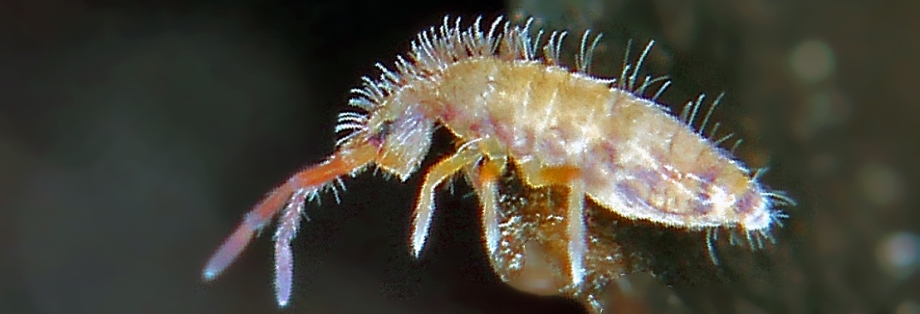
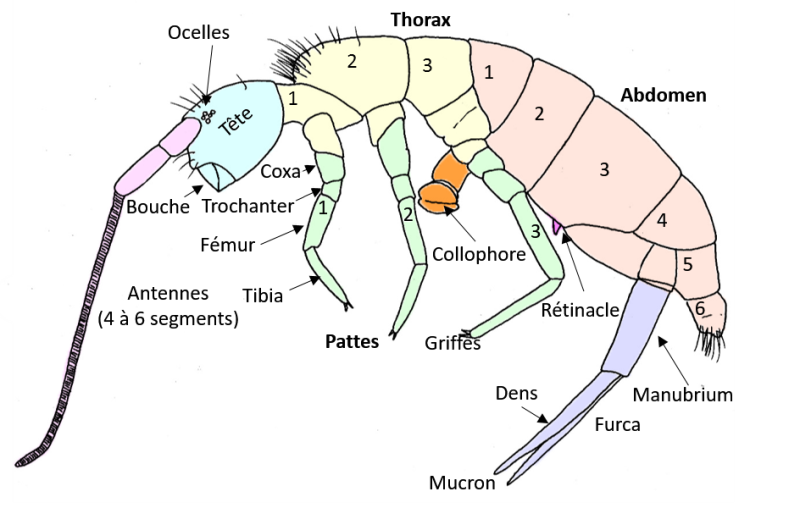
Note:
Although the morphologies of these Arthropleones differ, they have many similarities:
- Collophore on the abdominal segment n°1.
- Retinacle on the abdominal segment n°3.
- Genital opening located on the abdominal segment n°5.
- Anal orifice located on the abdominal segment n°6.
Ocelles composing the ocular plate: Less than or equal to 8.
- Enthusiastic mouthparts (locked in the head)
- Antennas composed of 4 segments (with the exception of Tomocerus which have only three and whose n° 3 is very long)
Chest segments:
- n°1 = Prothorax
- n°2 = Mesothorax
- n°3 = Metathorax
In Entomobryomorphs the prothorax (segment n°1) is very small and difficult to discern.
Symphypléones :
(This suborder bears the same name as the dominant family).
Symphypléones :
Their body is stocky and globular. The first four abdominal segments are fused to the thoracic segments and constitute the large abdominal, the last two abdominal segments forming the small abdominal. The antennae are longer than the head.

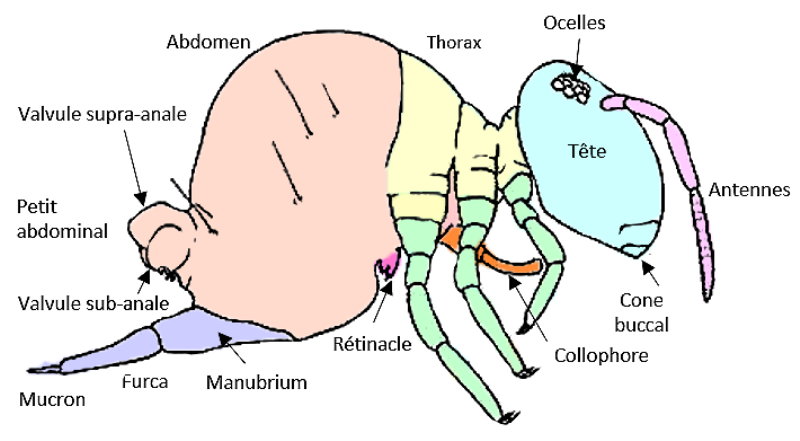
Neelipleones :
They are represented by a single family (Neelidae), of very small size (on average 0.5 mm), they do not have an eye plate but have a structure comparable to that of the Symphypleones, except that their body is an extension of the thorax not from the abdomen and that their antennae are shorter than their head.
